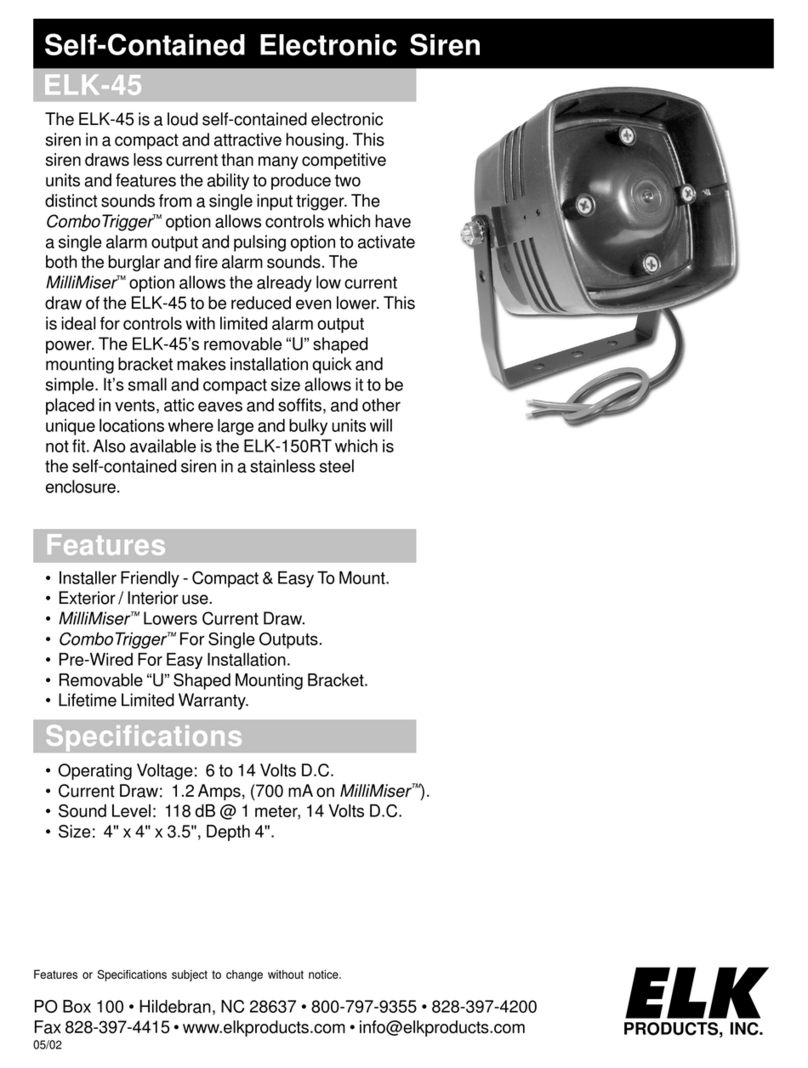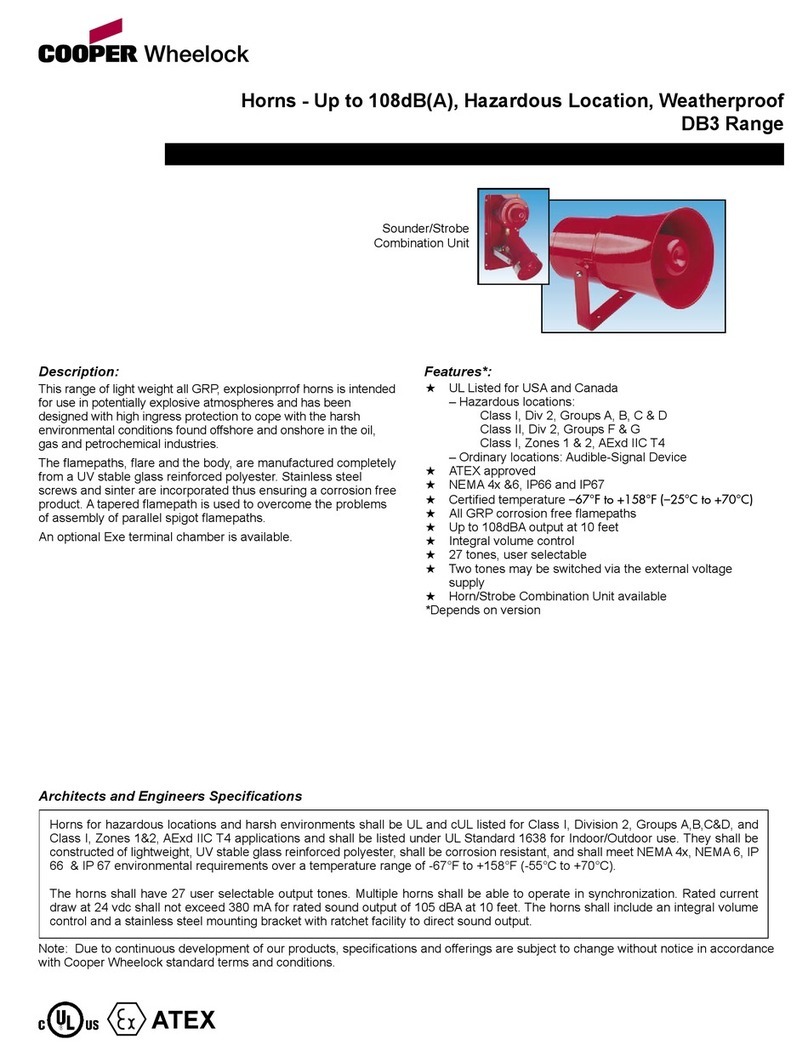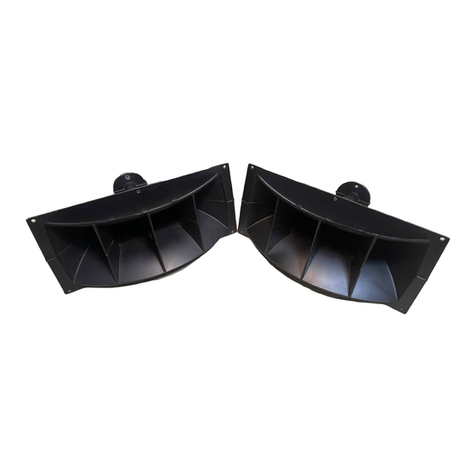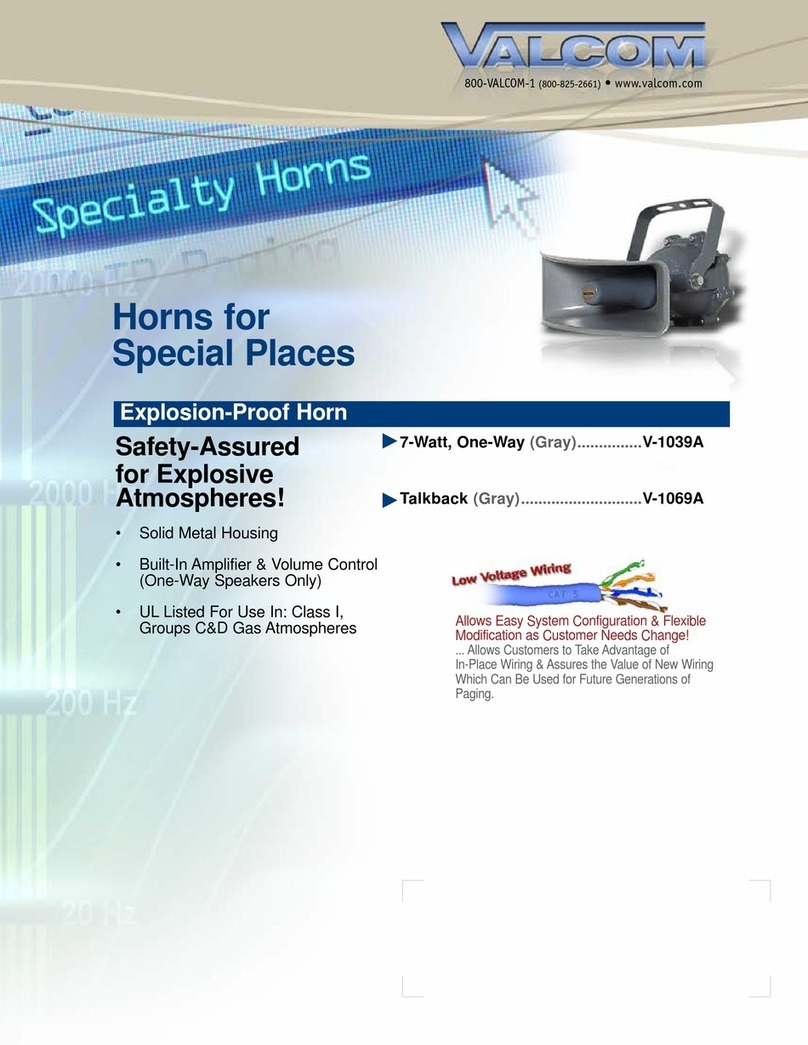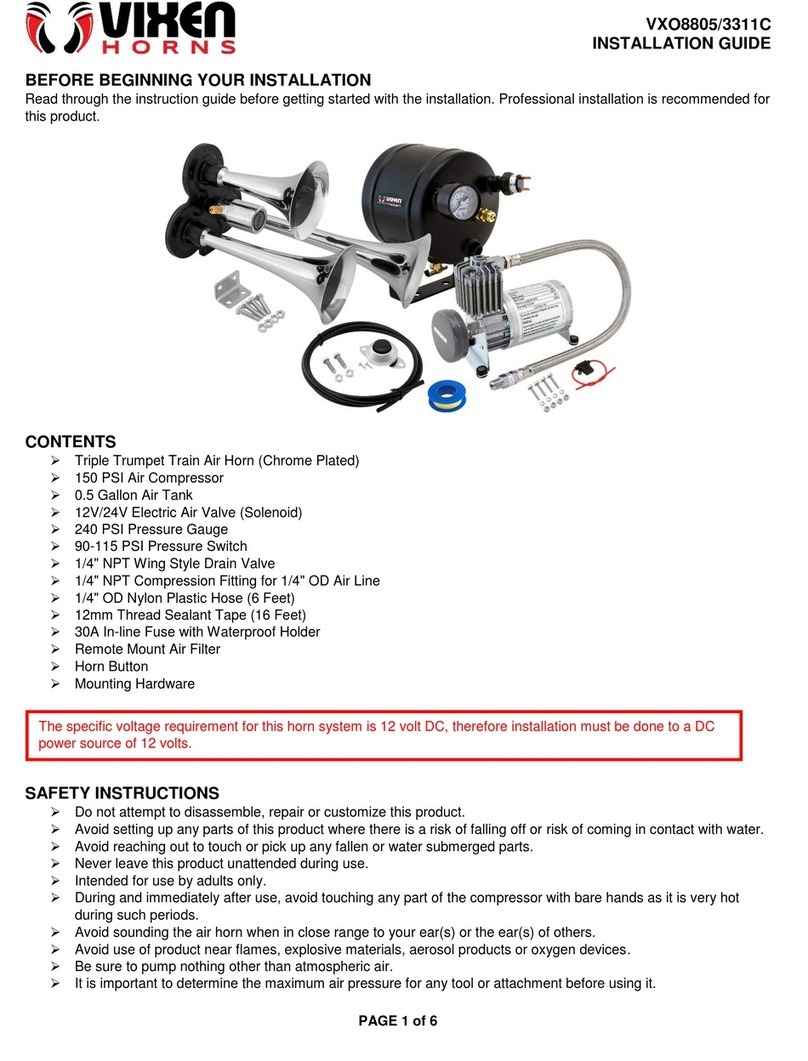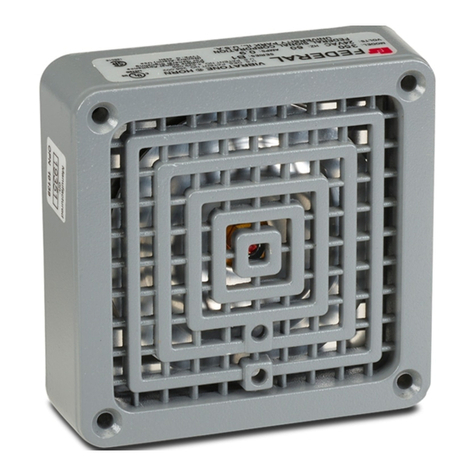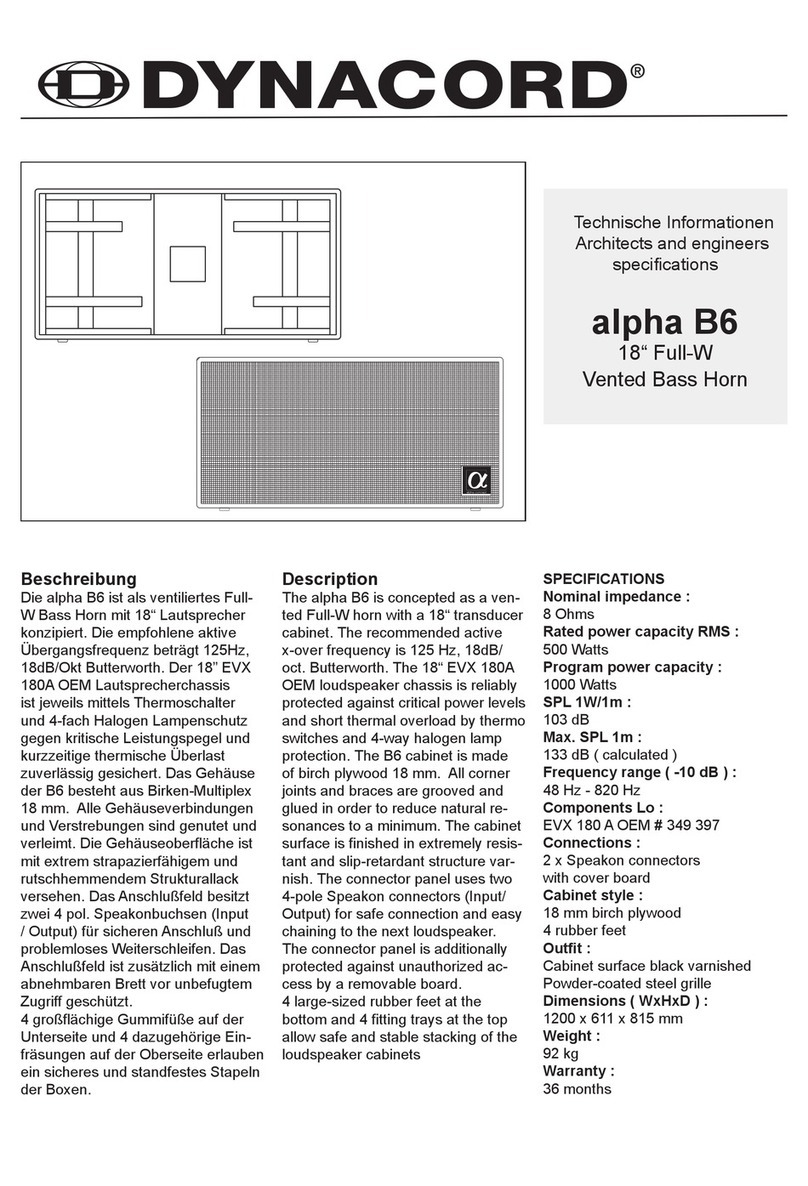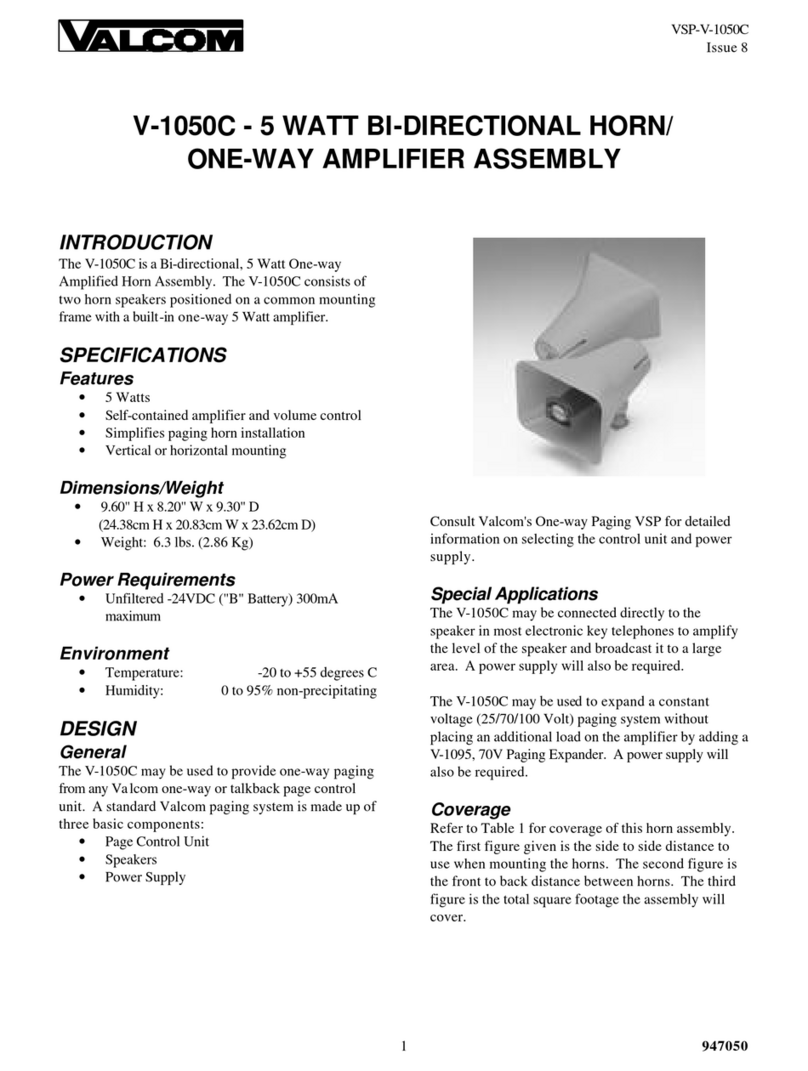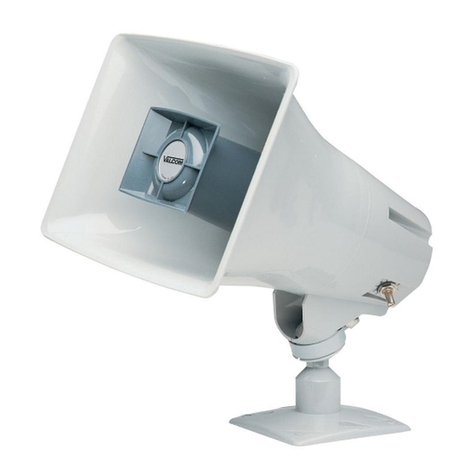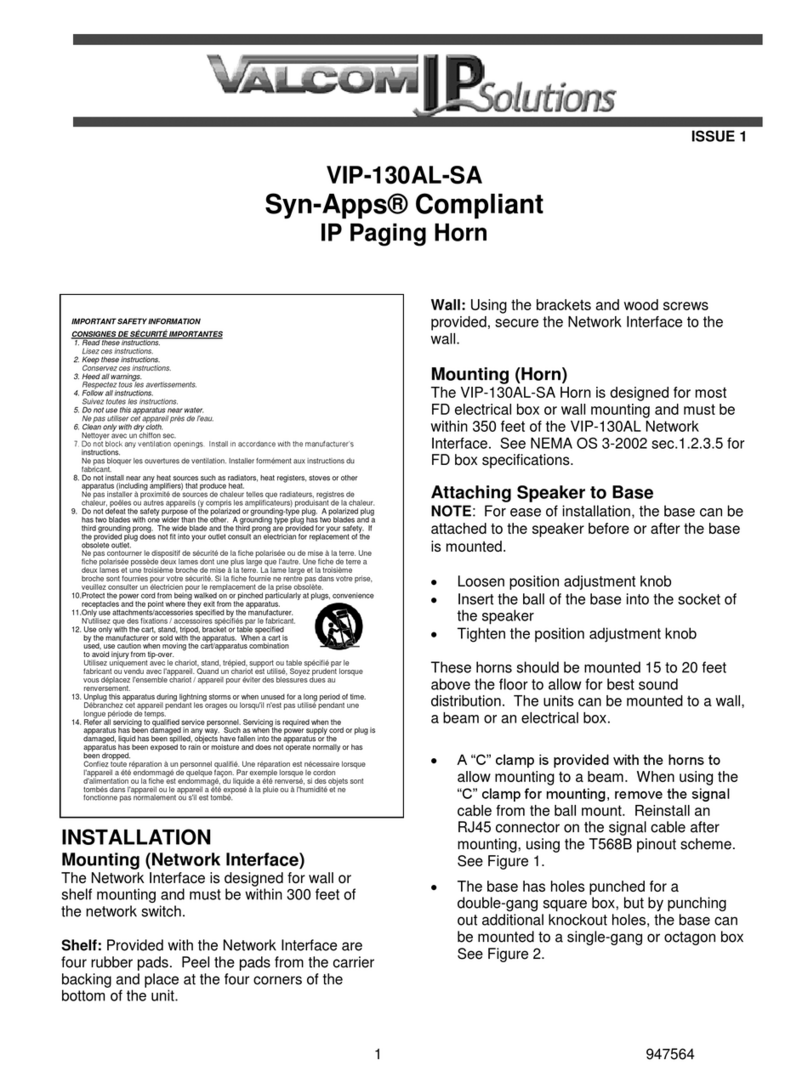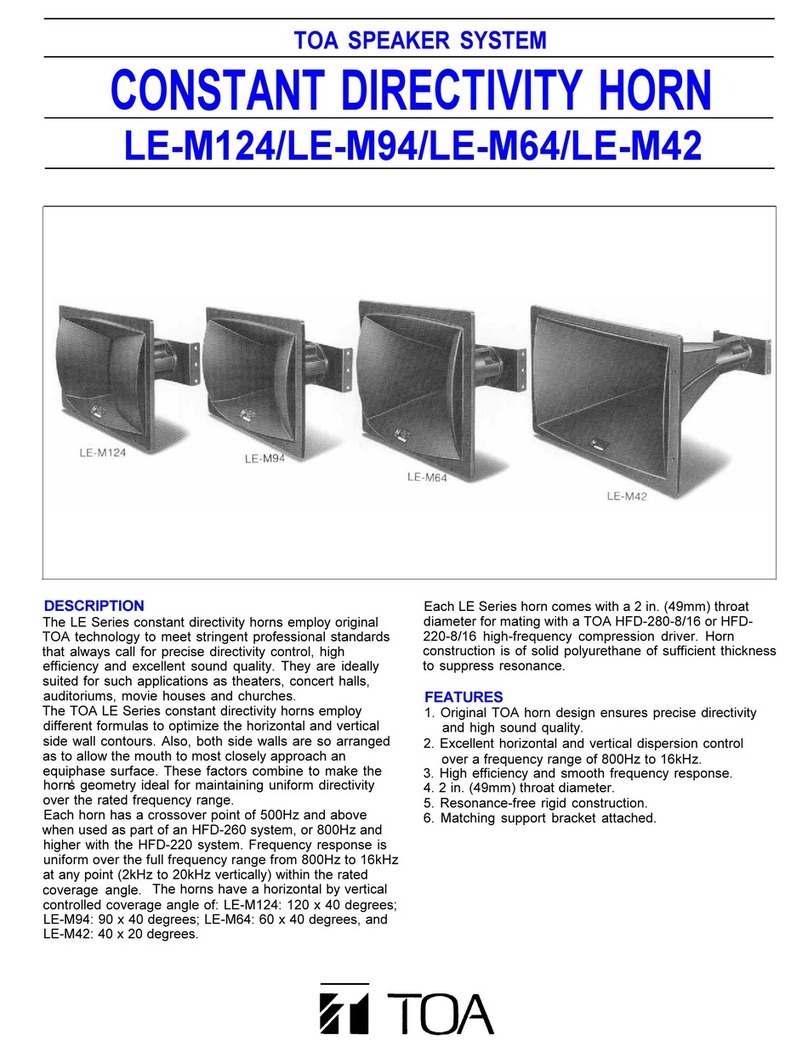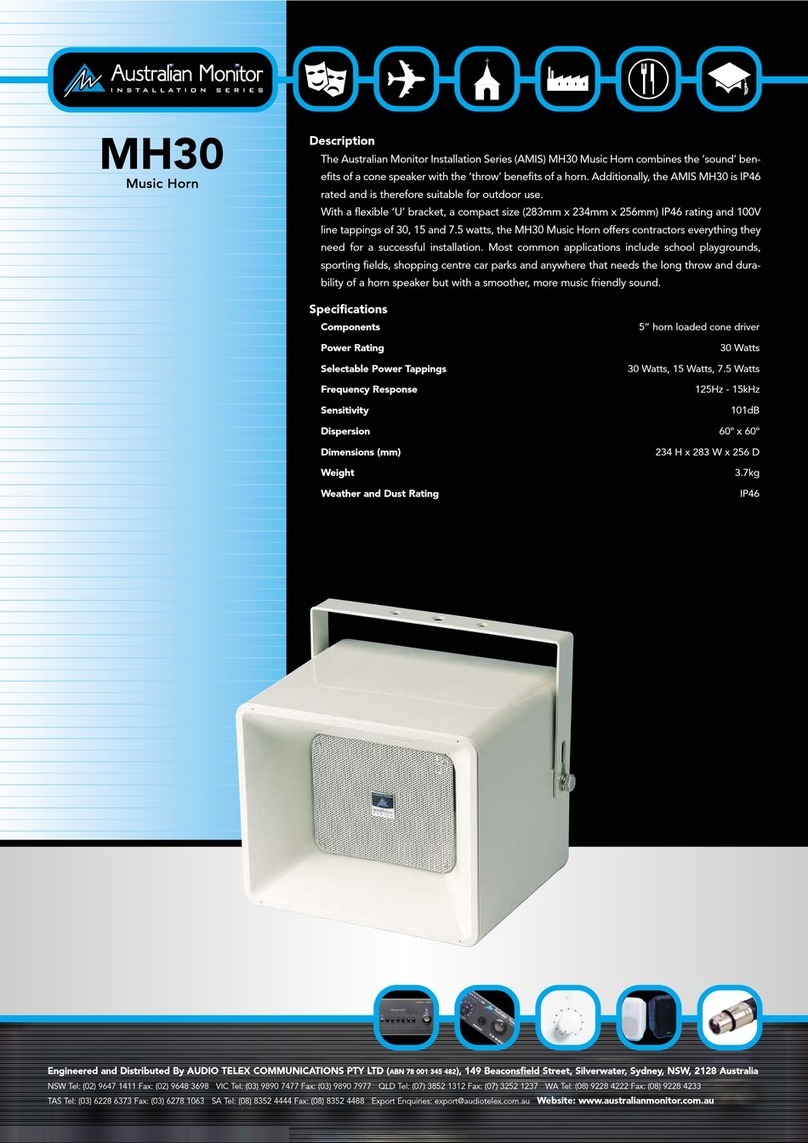
Updatele01/07/2015
ITEM SW1,SW2,SW3,SW4
Tone Frequency ToneDescription ToneApplication Waveform dB@1meter Bit123456 DC(mA) AC(mA)
00 0 0 0 0 0 000000 60 10
01 300Hz Continuious 105 100000 925 105
02 340Hz Continuious 105 010000 925 105
03 440Hz Continuious 105 110000 950 105
04 554Hz Continuious 106 001000 925 99
05 660Hz Continuious All‐clear,Sweden 104 101000 904 90
06 800Hz Continuious 105 011000 795 78
07 1000Hz Continuious PFEERToxicGas 109 111000 840 80
08 1200Hz Continuious 106 000100 930 83
09 2000Hz Continuious 105 100100 990 69
10 2400Hz Continuious 103 010100 945 60
11 2850Hz Continuious 102 110100 880 48
14 660Hz@150mson,150msof
Intermittent SwedishFireAlarm 100 011100 960 96
15
[email protected]secon,1.8secoff
Intermittent
SwedishFireAlarm
103
111100
985
100
16 745Hz@500mson,500msof
Intermittent 102 000010 840 84
17 800Hz@250mson,250msof
Intermittent 102 100010 820 76
18 800Hz@250mson,1sof
Intermittent 100 010010 850 84
19 1000Hz@250mson,250msof
Intermittent 105 110010 890 80
20 1000Hz@500mson,500msof
Intermittent Back‐upAlarm(LF) 105 001010 870 82
21 1000Hz@250mson,1sof
Intermittent 105 101010 900 84
22 1000Hz@1son,1soff Intermittent PFEERGen,Alarm 105 011010 890 83
23 2400Hz@250mson,250msof
Intermittent 101 111010 1020 62
24 2400Hz@500mson,500msof
Intermittent 100 000110 1010 50
25 2850Hz@1son,1soff Intermittent Back‐upAlarm(HF) 101 100110 93050
26 2850Hz@150mson,100msof
Intermittent Pelicancrossing 101 010110 900 82
27 970Hz@500mson,500msoff,1.5sof
3Pulses ISO8201LowTone 105 110110 870 51
28 2850Hz@500mson,500msoff,1.5sof
3Pulses ISO8201LowTone 101 001110 950 90
29 700Hz@2son,2soff Intermittent Air‐raid,Sweden 105 101110 890 86
30 700Hz@125mson,125msof
Intermittent LocalWarning,Sweden 105 011110 875 87
31
[email protected]on,0.3soff
Intermittent
Industrialalarm,Germany
105
111110
875
102
32 544Hz/440Hz@500ms Alternating SwedishFireAlarm 101 000001 970 104
33 544Hz/440Hz@100ms/400ms Alternating AFNOR,NFS32‐001 101 100001 960 102
34 544Hz/400Hz@1s Alternating Turn‐out,Sweden 100 010001 970 80
35 800Hz/1000Hz@125ms Alternating IncreasedUrgency 104 110001 830 55
36 2400Hz/2900Hz@125ms Alternating SecurityDeterrent 100 001001 950 78
37 800Hz/1000Hz@250ms Alternating FireAlarms 104 101001 830 78
38 800Hz/1000Hz@580ms Alternating 104 011001 840 75
39 1000Hz/2000Hz@500ms Alternating 104 111001 1020 55
40 2400Hz/2900Hz@250ms Alternating SecurityAlarms 100 000101 950 92
41 500Hz‐‐1000Hz@6Hz FastWhoop 103 100101 900 102
43 660Hz‐‐1200Hz@1Hz Sweeping 101 110101 910 78
44 800Hz‐‐1000Hz@1Hz MedSweeping(LF) 101 001101 830 78
45 800Hz‐‐1000Hz@7Hz FastSweeping(LF) 102 101101 800 55
46 2400Hz‐‐2900Hz@1Hz Sweeping 100 011101 930 55
47 2400Hz‐‐2900Hz@7Hz FastSweeping 100 111101 910 75
48 800Hz‐‐1000Hz@50Hz Lowfreqbuzz Buzz 100 000011 810 55
49 2400Hz‐‐2900Hz@50Hz Highfreqbuzz Buzz 100 100011 900 103
51 500Hz‐‐1200Hz@5s↑0,25s SlowWhoop Evacuation,Netherlands 102 110011 1000 104
52 1200Hz‐‐500Hz@1Hz ReverseSweeping Evacuation,Germany 102 001011 960 84
53 1400Hz‐‐1600Hz@1s↑0,5s↓ Sweeping NFC48‐265 100 101011 1040 66
54 Simulatedbell FastShake Bell 98 011011 860 102
55 800Hz/660Hz Towtonechime Int'levacuationalarm 102 111011 980 102
56 800Hz/1000Hz ISO8201Evacuation Int'levacuationalarm 102 000111 880 81
57 250Hz‐‐1200Hz@3s↑,6s,3s↓ MotorSiren‐slowrise 104 100111 1000 107
58 250Hz‐‐800Hz@3s↑,6s,3s↓ MotorSiren‐slowrise 105 010111 1020 108
59 250Hz‐‐1400Hz@3s↑,6s,3s↓ MotorSiren‐slowrise 100 110111 950 106
DESCRIPTION COMSUPTION


